4 Hanfu Collar Types to Know

Introduction: Unveiling Hanfu Collar Charm
Hanfu, the traditional dress of the Han Chinese, captivates with its intricate designs and cultural depth. At the heart of its elegance lies the Hanfu collar, a defining feature that shapes the garment’s identity. For enthusiasts and buyers in the Hanfu market, understanding collar and placket styles is essential to appreciate authenticity. In this blog, we explore four iconic Hanfu collar types, including the overlapping placket and facing placket, diving into their structure, history, and significance. Let’s unravel the artistry behind these timeless designs!
The Essence of Hanfu Collar and Placket
The collar frames the neckline, while the Hanfu placket forms the front closure, together creating the garment’s silhouette. These elements, crafted through traditional cutting, reflect Hanfu’s “secondary forming” principle—where styles adapt when worn. For example, a flat-laid garment may transform into an overlapping placket on the body. This article focuses on the core collar types, offering insights into Hanfu placket variations and their role in defining authenticity.
Why Structure Matters
Looking at Hanfu’s appearance is tempting, but the real magic lies in its inner structure. A collar’s design isn’t just about aesthetics—it’s about balance and function. By examining the placket’s inner layers, you uncover the craftsmanship. For shoppers, product images showing the opened placket are crucial. For researchers, perspective diagrams reveal the three-dimensional essence. This structural focus distinguishes true Hanfu from imitations, ensuring you choose quality pieces.

Only the perspective view, can fully display the structure of Hanfu, completely and perfectly present the form information of Hanfu.
A complete structural perspective view, is the most basic foundation for researching Hanfu forms.
Collar, Placket Main Classification
(I) Overlapping Collar Overlapping Placket
Overlapping collar overlapping placket is the most common and most basic form of collar and placket in the Huaxia clothing and crowns Hanfu system, generally abbreviated as “overlapping collar.”
It can be simply described in one sentence: under the condition of cutting, the collar overlaps, at the same time the placket also overlaps, forming a “又” shape.
The variation forms are countless, according to the cutting method mainly divided into continued hem and non-continued hem two major categories.
Hem is a polysemous word, here it refers to a part of the placket.
1: Continued Hem
(1) Completely symmetrical continued hem.
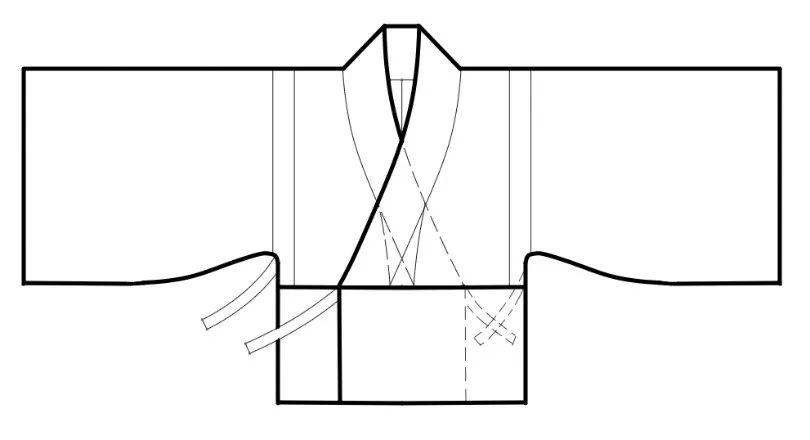
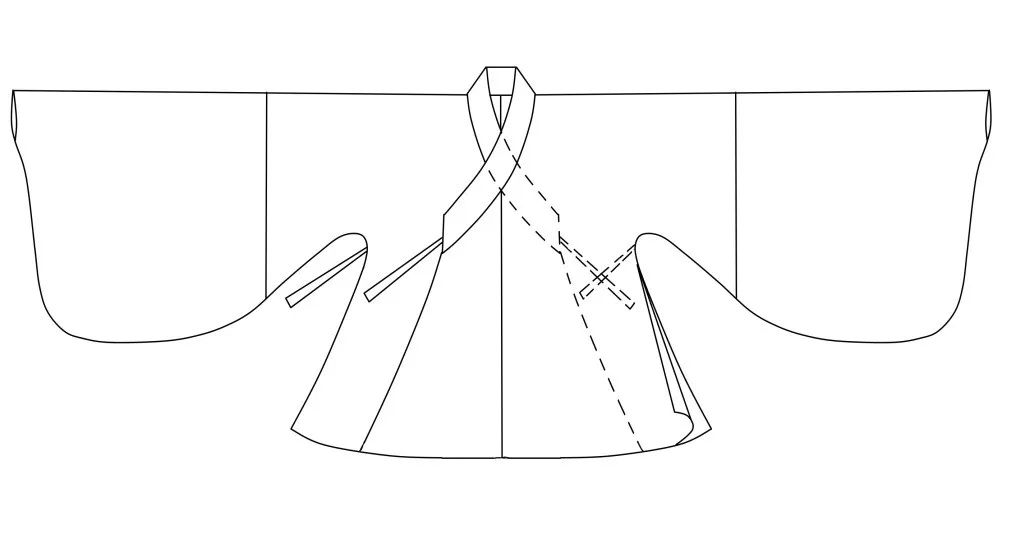
These two are styles shown by the Hanfu system in different historical periods, one is a connected hem short jacket, one is a jacket with slits on both sides.
As far as the collar and placket are concerned, the structure is the same: the cutting pieces of the inner and outer plackets are completely symmetrical, the front center seam continues the hem, forming the overlapping of inner and outer plackets, the whole pulls to the left and right, force balanced.
(2) Inner and outer placket cutting pieces not completely symmetrical continued hem.


The cutting piece of the inner placket compared to the outer placket is somewhat narrower, but still the inner placket possesses the function of connecting to the left side, tying closure bearing force.
The inner and outer plackets still pull to the left and right, force balanced.
2: Non-Continued Hem

From the cutting flat lay perspective view it can be seen, this kind of shallow overlapping of the two plackets, at the same time the collar also intersects, belongs to the non-continued hem overlapping collar.
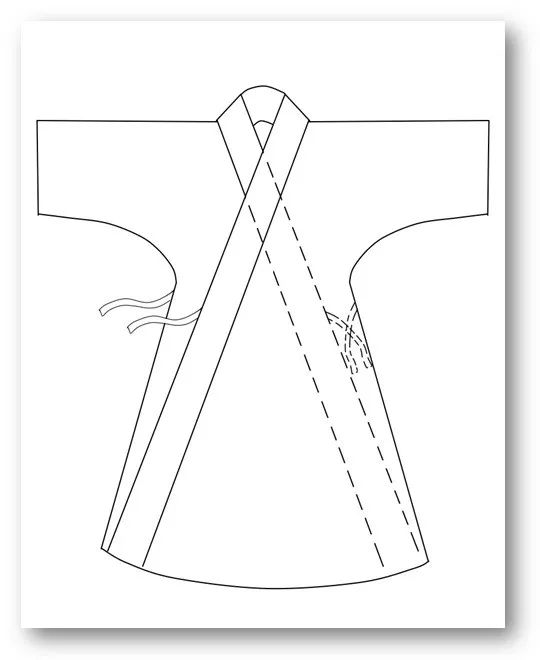
Through the tie, the inner and outer plackets pull to the left and right, force balanced.
The bordered jacket is collar and placket integrated, through the perspective structure diagram it can be seen, directly cutting out the placket cutting piece, no front center seam, the inner and outer plackets form an overlapping state.The inner and outer plackets still pull to the left and right, force balanced.
(II) Curved Collar Overlapping Placket
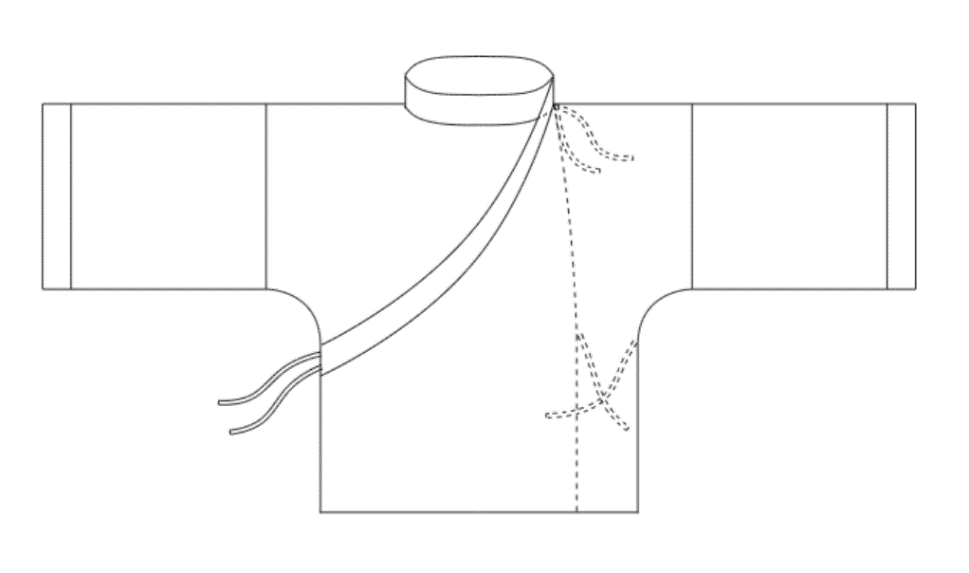
Curved collar overlapping placket is a form between overlapping collar and round collar, the inner placket is round collar while, the outer placket is half of an overlapping collar.
The inner and outer placket cutting pieces are different, but the inner placket connects to the left waist side, the inner and outer plackets pull to the left and right, force balanced.
(III) Round Collar Overlapping Placket
1, Completely Symmetrical
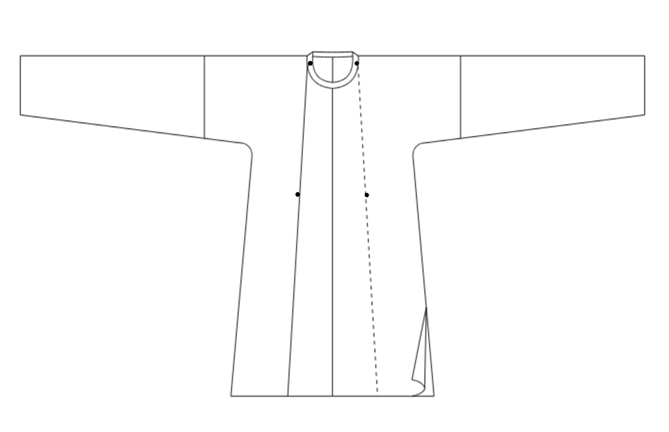
The collar and placket form of the round collar robe is round collar overlapping placket, from the perspective view it can be clearly seen, the inner and outer plackets have a front center seam, and completely symmetrical, the arc-shaped collar overlaps and coincides.
The symmetrical parts are respectively closed with inconspicuous loops.
The inner and outer plackets pull up down left right, force balanced.
Further speaking, only when the inner and outer plackets are completely symmetrical, can the wearing method of flipped collar appear.
The derivative style is exposed collar, between overlapping placket and facing placket.
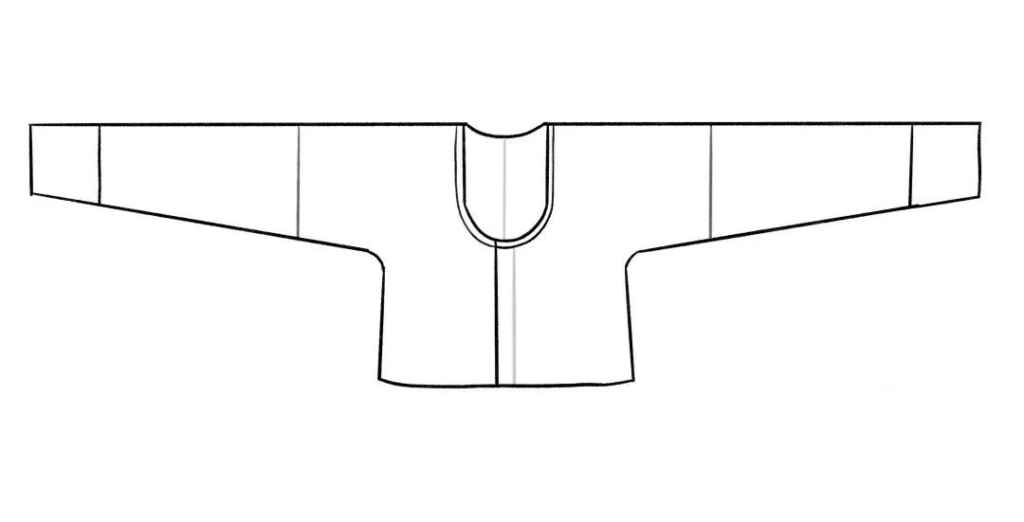
Exposed collar can be seen as an extremely shallow intersecting round collar overlapping placket.
2, Inner and Outer Placket Cutting Pieces Not Completely Symmetrical

The round collar robe continuously developed, and again developed the style of inner and outer placket cutting pieces not completely symmetrical.The collar sewn to the outer placket is an arc-shaped round collar, the collar sewn to the inner placket is half of an overlapping collar.The inner and outer plackets pull to the left and right, the closure point presents a triangular force balance.
(IV) Vertical Collar Overlapping Placket
Vertical collar overlapping placket is a style derived from overlapping collar, approximately born in the mid-Ming dynasty, mainly popular time is mid-late Ming, less than 100 years time, from the Hanfu system speaking, belongs to derivative branches, popular fashion style.
This is because, from the perspective of cutting, vertical collar overlapping placket is not the mainstream collar and placket integrated, but a newly appeared collar and placket separated.
Collar and placket integrated means the cutting pieces of the collar and placket are sewn together, the direction is consistent, occupying more than 90% of the Hanfu system volume;
Collar and placket separated means the cutting pieces of the collar and placket are partly sewn together, partly shaped, the collar and placket each do their own thing, the direction not completely consistent, is a branch phenomenon that appeared late in the Hanfu system.
1, Completely Symmetrical
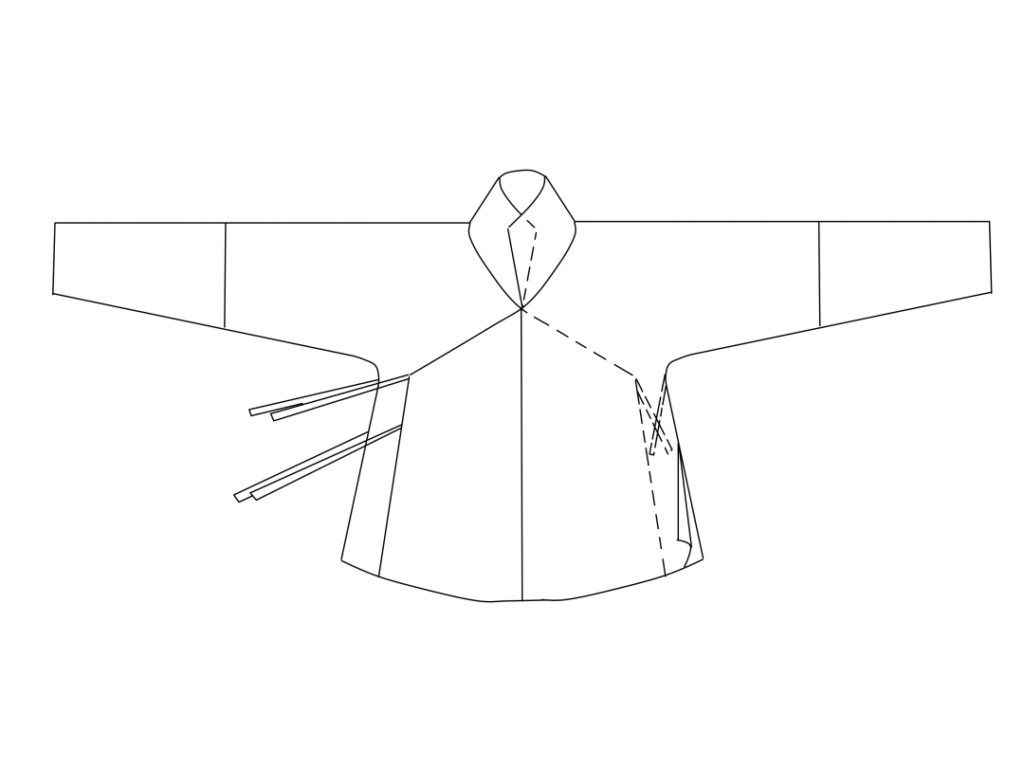
From the perspective of cutting, it is cutting off the collar part of the overlapping collar, only sewing the upper half, pinched together, forming a vertical collar wrapping the neck.Collar and placket separated, the collar and placket each are their own, the placket part is still inner and outer plackets overlapping, normal tie closure.Collar and placket separated, vertical collar, left and right ties, forming a triangular force form.
2, Inner and Outer Placket Cutting Pieces Not Completely Symmetrical
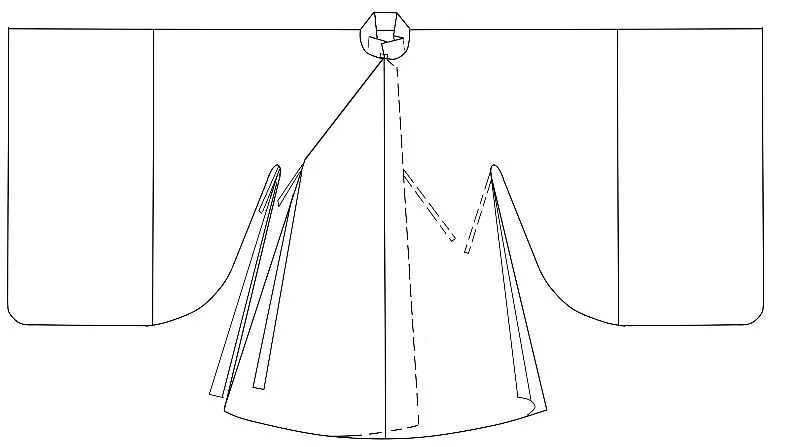
Vertical collar overlapping placket applied to long robes, the inner and outer placket cutting pieces adjusted according to specific forms. The inner placket cutting piece compared to the outer placket cutting piece is reduced, used to lighten the weight.The placket part is still inner and outer plackets overlapping, normal tie closure, pulling to the left and right.Collar and placket separated, vertical collar, left and right ties, forming a triangular force form.
Vertical collar is to serve overlapping placket, if the vertical collar element is separately cut out, sewn onto other clothing, then it is serving other clothing structures, no longer belongs to the Huaxia Hanfu system.
Overlapping Placket and Facing Placket Mutually Transform
Facing placket can be seen as overlapping placket with an overlapping amount of 0, in fact the two are like twin brothers, mutually transforming.
(I) Facing Placket Classification
1, Straight Collar Facing Placket

Facing placket is the placket presenting symmetry, parallel, not intersecting.Straight collar facing placket is collar and placket integrated, the collar and placket sewn together from head to tail (bordered).
2, Joined Collar Facing Placket
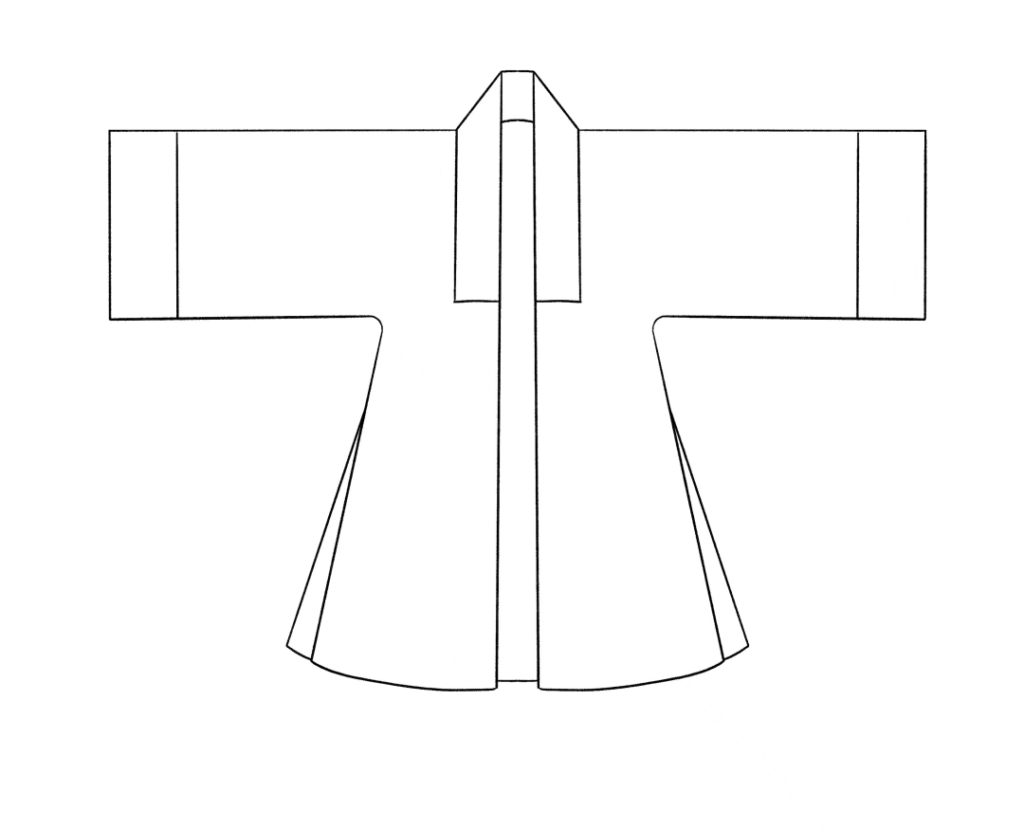
Joined collar facing placket is collar and placket integrated, but the characteristic lies in, the collar bordered to half.
3, Round Collar Facing Placket

From the perspective of cutting, it is the placket dug into round collar facing placket, the collar made into an arc-shaped round collar, sewn together, the placket part normal tie closure.
4, Vertical Collar Facing Placket
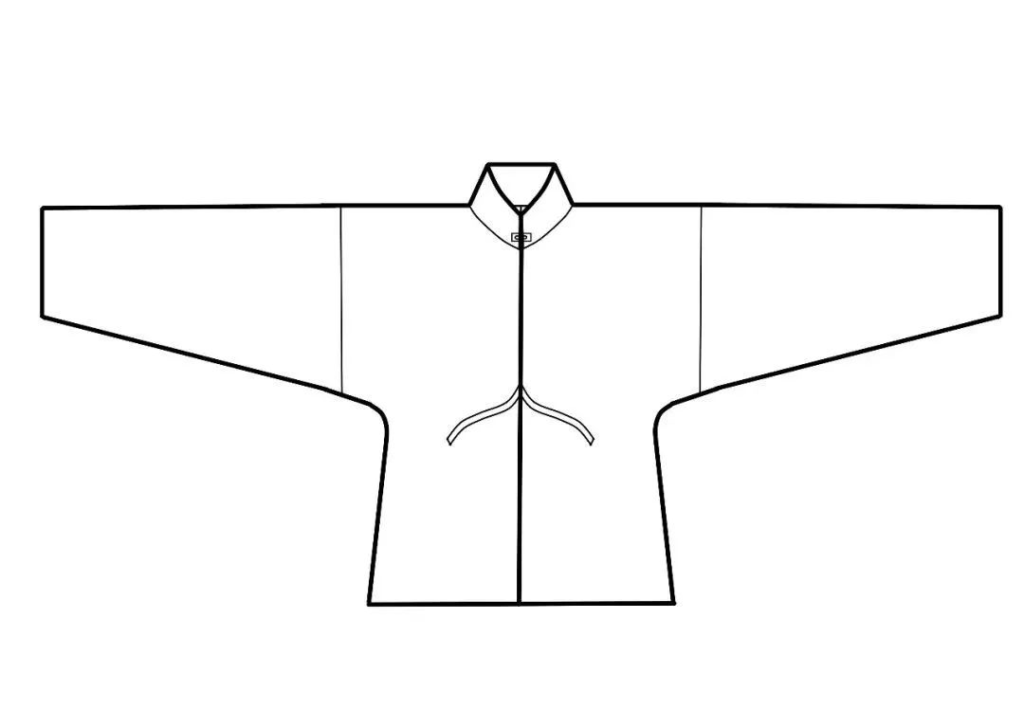
From the perspective of cutting, it is cutting off the collar part of the straight collar facing placket, only sewing the upper half, pinched together, forming a vertical collar wrapping the neck. Collar and placket separated, the collar and placket each are their own, the placket part is still facing placket, normal tie closure.
Derivative style square collar facing placket, the fashion trend style of that time.
(II) Facing Wear Overlapping Issue
Due to the “secondary forming” principle, besides cutting, there is also the issue of the “facing wear overlapping” wearing method. Many styles, cutting flat lay is facing placket, but after wearing on the body it is overlapping placket.Hanfu’s overlapping placket and facing placket are a mutually transforming relationship, just like twins, cannot be separated.
1, Taking “Airplane Sleeves” as an Example

From cutting speaking, “airplane sleeves” is straight collar facing placket, but in wearing method, it is to overlap forming overlapping collar.This explains one issue, Hanfu’s facing placket is not fixed, it is can through ties or waistband transform into overlapping placket.
In other words, judging whether a facing placket is the mainstream form of Hanfu, embodying Han traditional, just see if it can transform into overlapping placket wearing.
If it can, then it shows this facing placket form is Hanfu mainstream, trunk;
If it cannot, then it shows this facing placket form very likely is Hanfu’s branch, derivative, minor detail.
2, Taking Zhuzi Deep Clothing as an Example

Besides short clothing, long clothing long robes similarly also exist the “facing wear overlapping” issue, for example the famous “Zhuzi deep clothing,” is typically cutting is facing placket, wearing method is overlapping placket.
3, Shallow Overlapping Collar
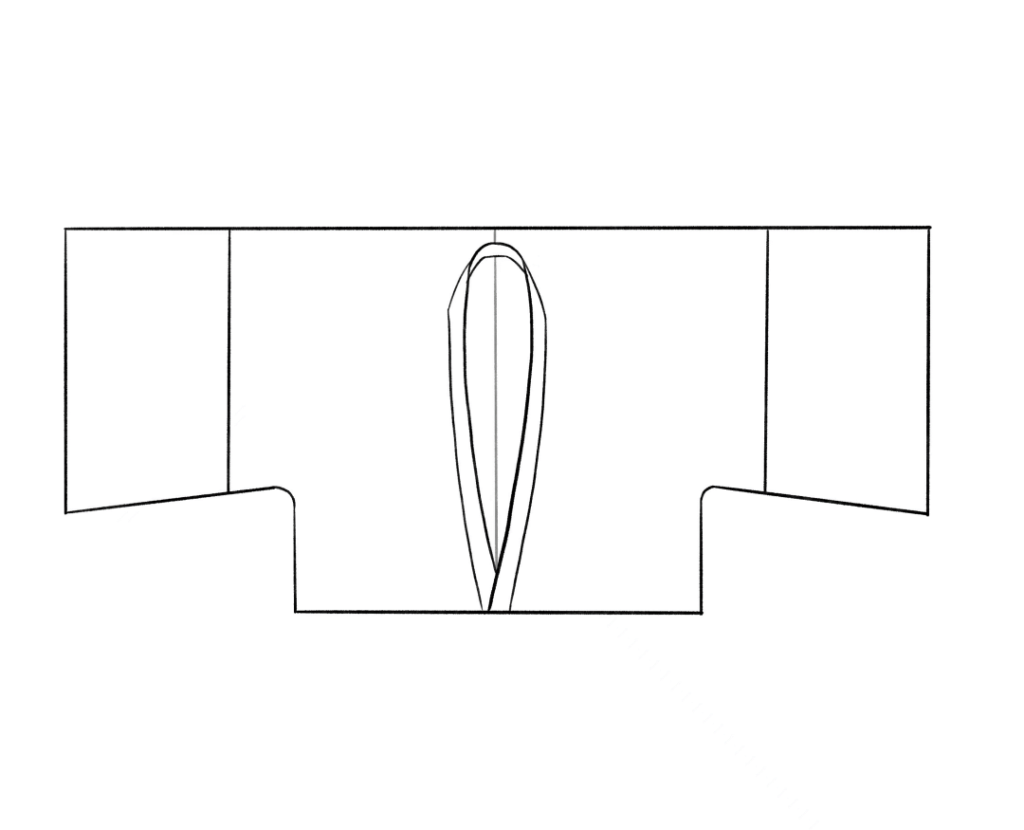
Facing Placket: A Complementary Style
The facing placket, where plackets align without overlapping, is like a twin to the overlapping placket. Styles like straight collar or round collar facing plackets transform into overlapping forms when worn, thanks to ties or waistbands. For instance, “Zhuzi deep clothing” starts as a facing placket but becomes overlapping in practice. This fluidity underscores Hanfu’s genius, blending form and function seamlessly.
A Glimpse into History
Hanfu collar designs trace back over 5,000 years, with the overlapping placket as the backbone. Ancient texts like the “Jade Chapters” describe its form, while artifacts confirm its enduring presence. Facing plackets and vertical collars emerged later, reflecting fashion trends. To dive deeper, check out The Metropolitan Museum’s Chinese textile collection or read scholarly insights on JSTOR. These resources enrich your understanding of Hanfu’s legacy.


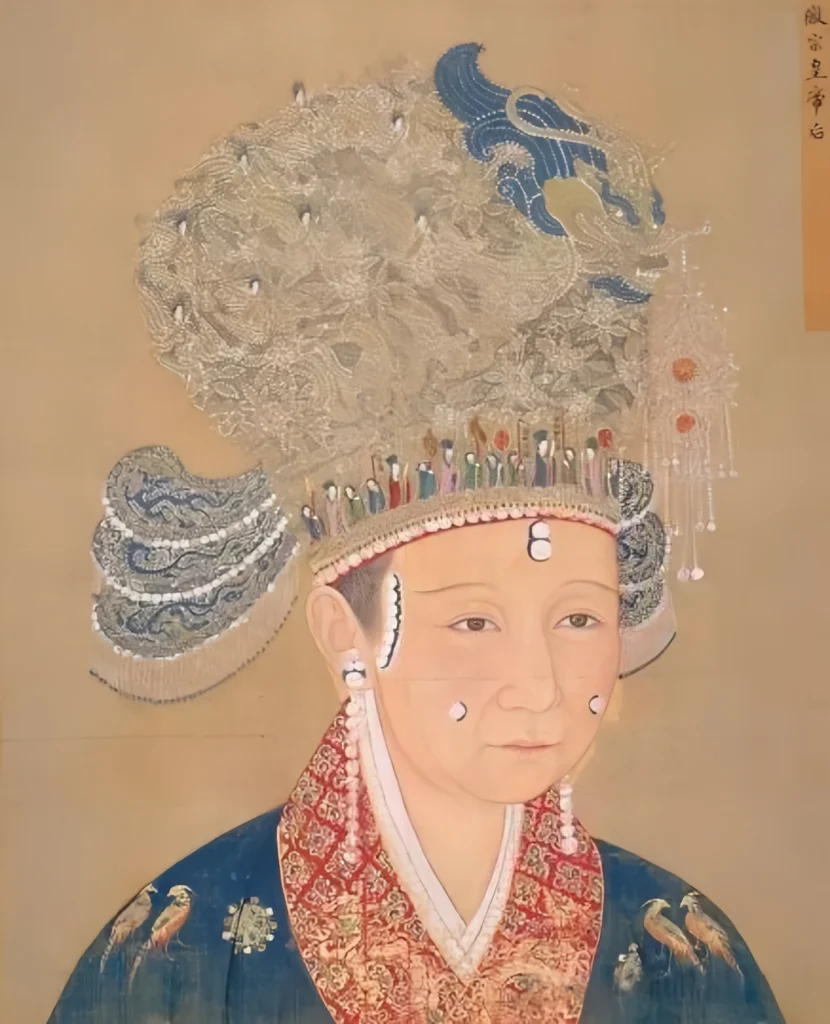

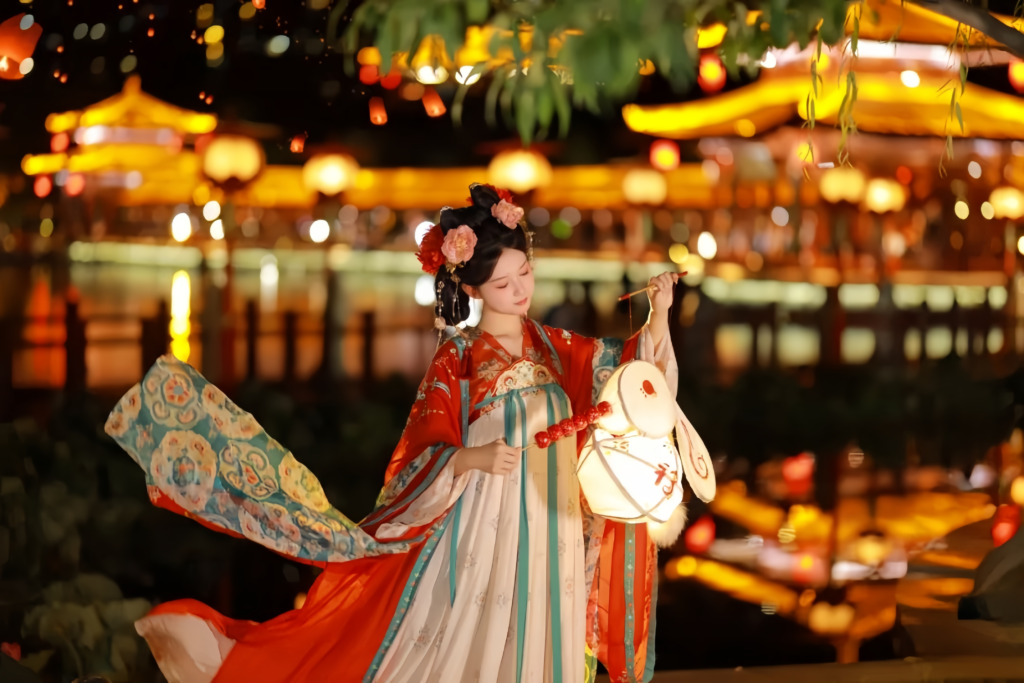
Responses